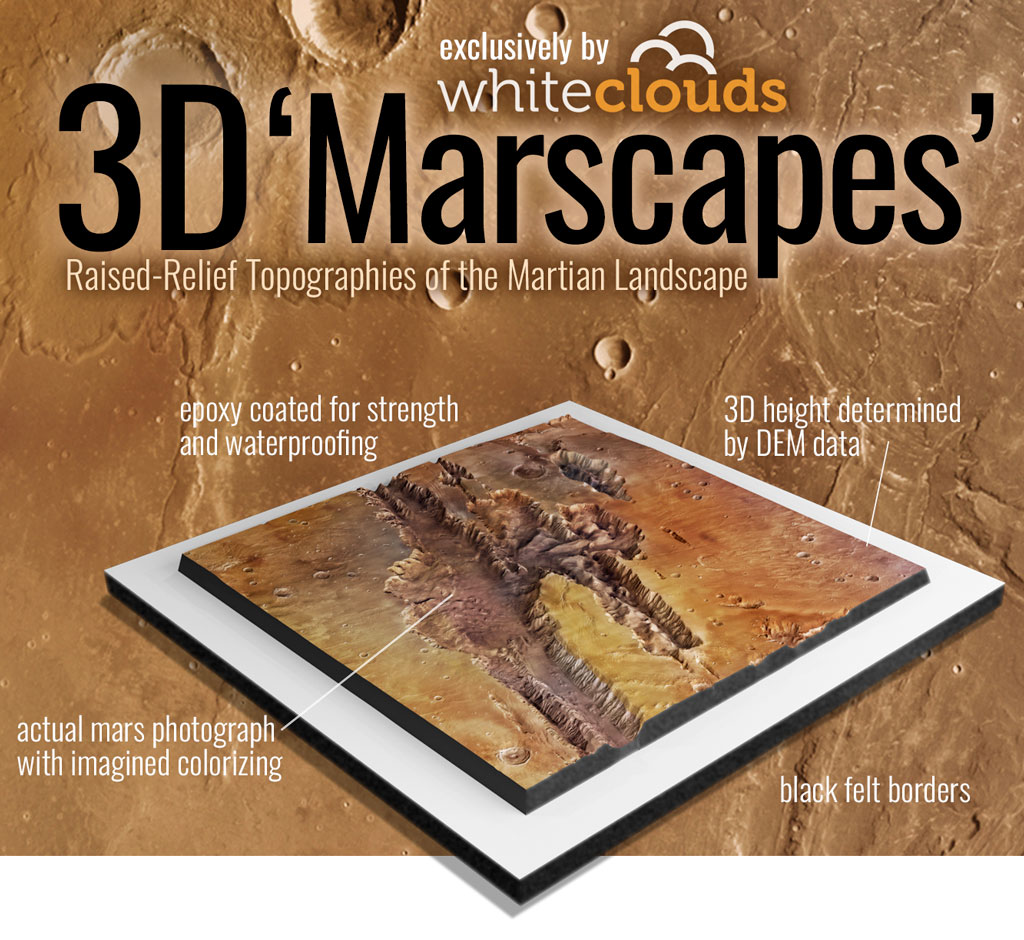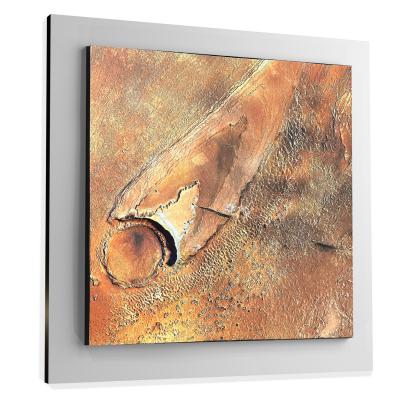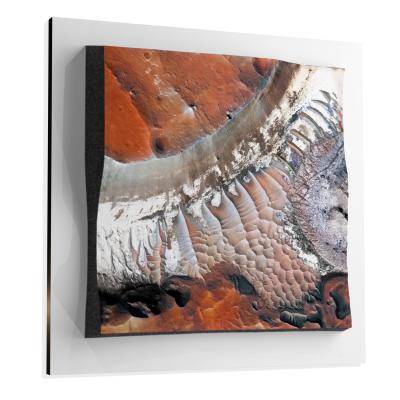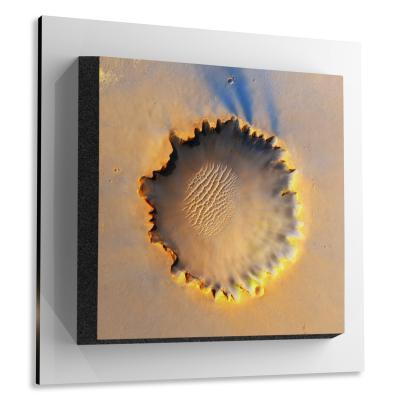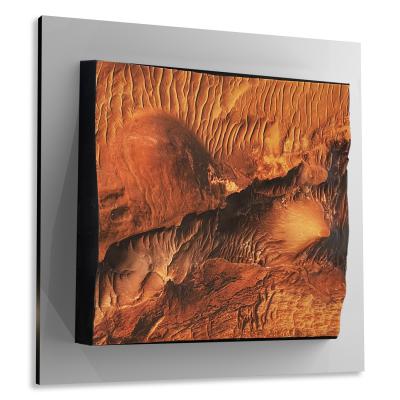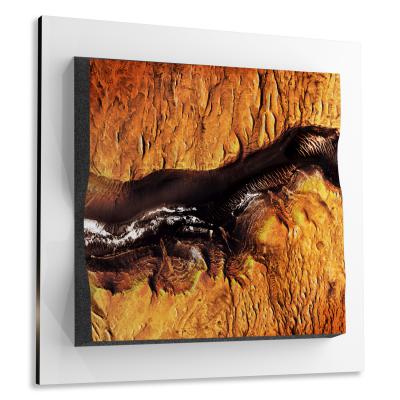Garni Crater
Garni Crater
We Build Custom 8K Mars Canvas Prints of Garni Crater
Did you know we make
custom
8K Mars Canvas Prints

and
3D Marscapes

Garni Crater
Garni Crater serves as a window into the fascinating and complex history of Mars, offering crucial insights into various geological, geomorphological, and climatic phenomena that have shaped the planet over billions of years. Named after Garni, a village in Armenia, this Martian crater holds a plethora of scientific secrets waiting to be unraveled. This comprehensive report delves into the geographical location, geological composition, significant discoveries, scientific missions, and geomorphological features of Garni Crater.
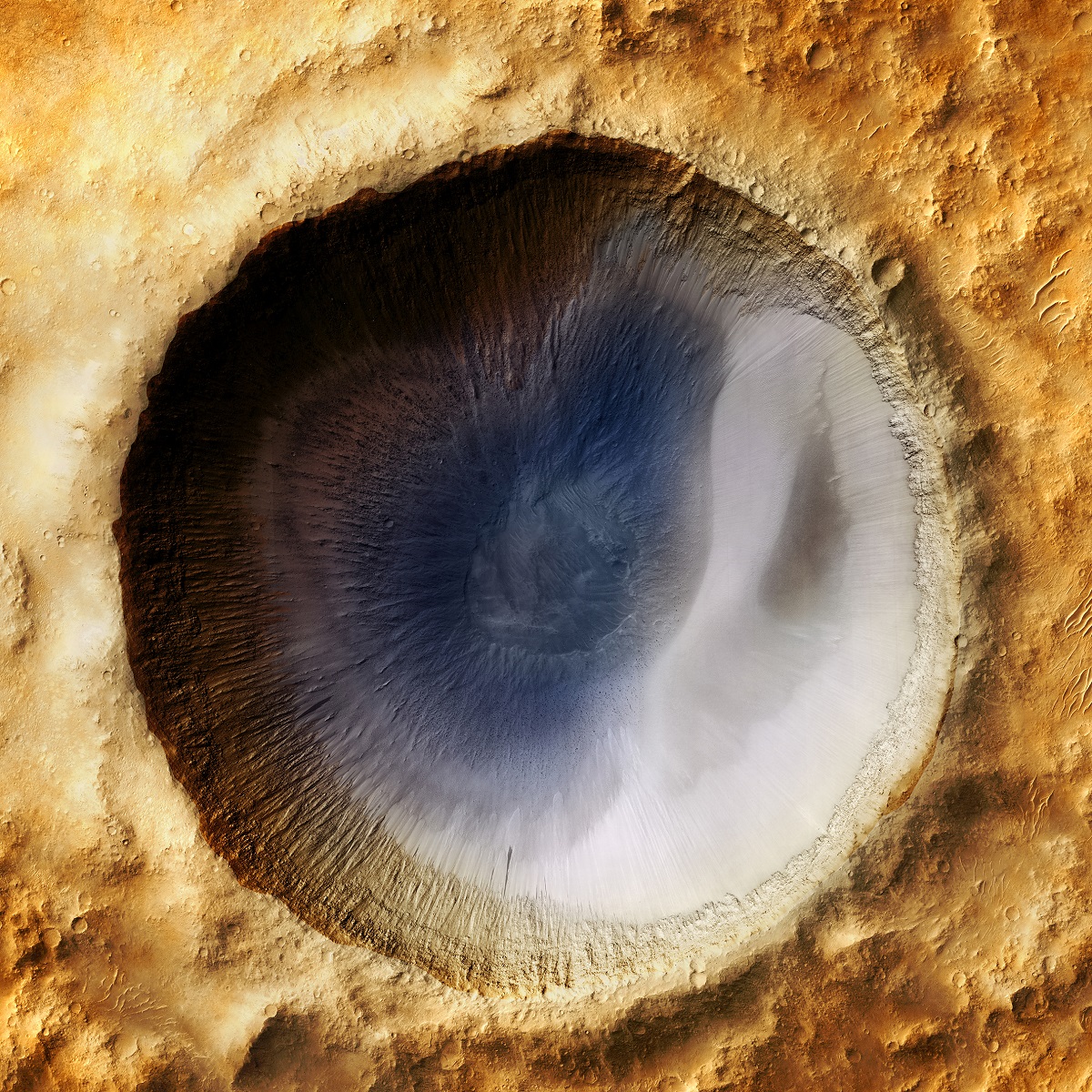 Garni Crater
Garni Crater
Geographical Location
Nestled in the western expanses of the formidable Tharsis volcanic plateau, Garni Crater is a geologically captivating landmark, pinpointed roughly at coordinates 2 degrees North latitude and 127 degrees West longitude. With a measured diameter approaching 25 kilometers, the crater distinguishes itself from the sea of immense craters that dot the Martian landscape. Its modest dimensions make it a focal point for concentrated, highly detailed scientific studies. The crater is not an isolated feature; rather, it sits enmeshed within an intricate Martian backdrop teeming with volcanic cones, fissures, expansive lava plains, and a multitude of other impact craters. Garni Crater’s geographical juxtaposition near the Tharsis volcanic region—a hotbed of Mars’ geological dynamism—amplifies its significance as an invaluable natural laboratory. This strategic location gifts Garni Crater with a multifaceted geological context, enriching our comprehension of the Martian landscape’s evolution, as well as its climatic shifts across aeons.
Advertisement
Sample Marscapes
Geological Composition
The geological portfolio of Garni Crater unfolds as a riveting mosaic, chronicling the multifarious epochs of Mars’ ancient history. A treasure trove of spectroscopic data has unveiled a rich palette of minerals gracing the crater’s terrain, including but not limited to basalts, sulfates, and speculative traces of clays. These minerals serve as geological signposts, each alluding to a spectrum of geological processes that have likely shaped the crater over time—ranging from effusive and explosive volcanic activities to aqueous alteration mechanisms and stratified sedimentary deposition. A particularly compelling feature lies in the stratigraphy of the crater floor, where sedimentary rocks are demarcated in meticulous layers. These tiers suggest rhythmic, possibly seasonal, deposition episodes that occurred in Mars’ distant past. Contrasting sharply with the crater floor are its rim and walls, which bear the scars of geological violence. Here, the terrain is jagged, eroded extensively by relentless aeolian forces and potentially by historical episodes of fluvial activity. This creates a labyrinthine geological quilt that adds layers of complexity to the ongoing scientific interpretations of Mars.
Significant Discoveries
Among the revelations that have electrified the scientific community is the discovery of sedimentary structures within Garni Crater that bear an uncanny resemblance to ancient terrestrial lake beds. This provocative find suggests the crater might once have been a basin for standing water, thereby opening Pandora’s box of questions about Mars’ erstwhile ability to harbor life forms. Adding another layer to this hypothesis are the bounteous mineral deposits scattered across the crater. The minerals, specifically sulfates and clays, are known to be byproducts of water-based geological processes, strengthening arguments that Garni Crater was once a participant in a more aqueous, possibly even hospitable, Martian landscape. The crater’s morphology also contributes to its laundry list of scientific treasures. Features such as the well-delineated rim, the jutting central peak, and the terraced, multitiered walls serve as an open book on the intricate dynamics and mechanisms underlying impact cratering phenomena on the Martian surface.
Scientific Missions
The Mars Reconnaissance Orbiter (MRO) has played an inestimable role in bringing Garni Crater under the scientific lens. Equipped with state-of-the-art imaging and spectroscopic apparatus, MRO has peeled back the layers of the crater, illuminating its mineralogical constitution and offering a virtual tour of its geomorphological quirks. Preceding MRO, earlier missions like the Viking Orbiters in the late 1970s had offered glimpses of the crater but lacked the technological finesse to plunge into its depths. The high-definition data from MRO have ushered in a new era of understanding, setting the stage for further elaborate studies. Given Garni Crater’s tantalizing features, it remains high on the roster of exploration targets for impending Martian missions, which aim to untangle the web of geological and possibly astrobiological enigmas that Mars holds.
Geomorphological Features
The geomorphology of Garni Crater is a kaleidoscopic array of natural phenomena that offers a blueprint for decoding not only its own historical narrative but also that of wider Martian geology. Typical of complex impact craters, Garni showcases terraced walls and a central peak, both of which serve as geological windows into the subsurface mineralogy and the kinetics of impact events. Far from being a flat, nondescript bowl, the crater floor is a realm of subtle complexities. It is punctuated by a multitude of features, such as layered sedimentary rock formations and what are hypothesized to be remnants of ancient lake beds. These diverse elements could provide incisive insights into the Martian climate of yesteryears and elucidate sediment transport mechanisms that have acted over the planet’s long geological timeline.
Garni Crater is more than just a dent in the Martian surface; it is a complex geological and geomorphological archive that provides a unique lens through which we can study the Red Planet’s history. Its geographical location near the Tharsis volcanic region, its diverse geological composition, significant discoveries like ancient lake beds and mineral deposits, and its focus in scientific missions make it a compelling subject for ongoing and future research. As we continue to probe its secrets, Garni Crater promises to reveal even more about Mars’ geological past and perhaps its astrobiological potential.
Check out our 3D Mars Learning Center for more information on Mars and Garni Crater. You can also learn more at: NASA Mars Exploration.
More About Mars
Contact us today to learn more about our 3D services and how we can help you achieve your goals.
